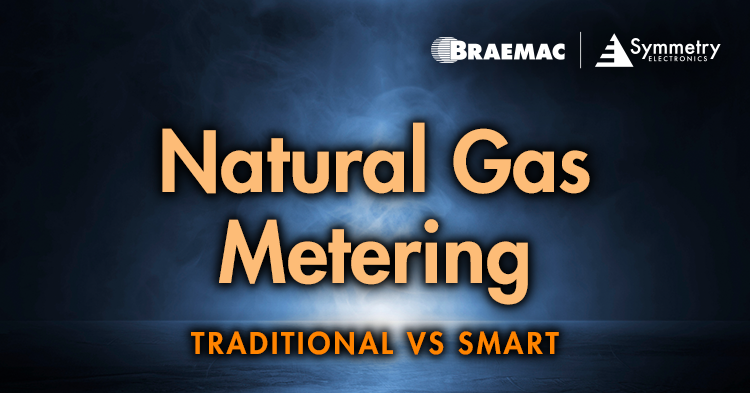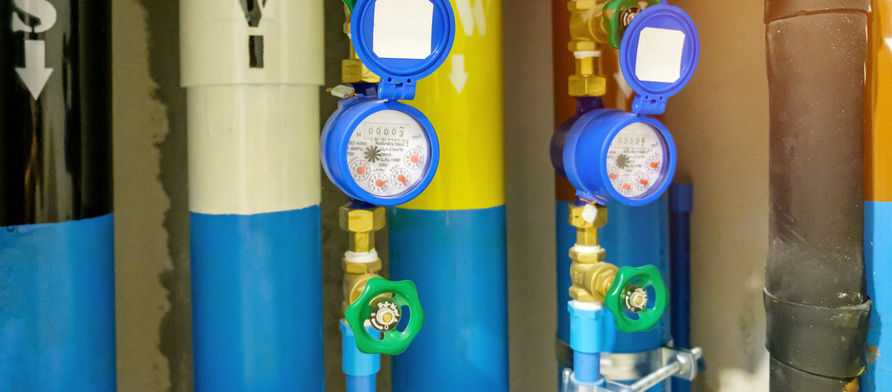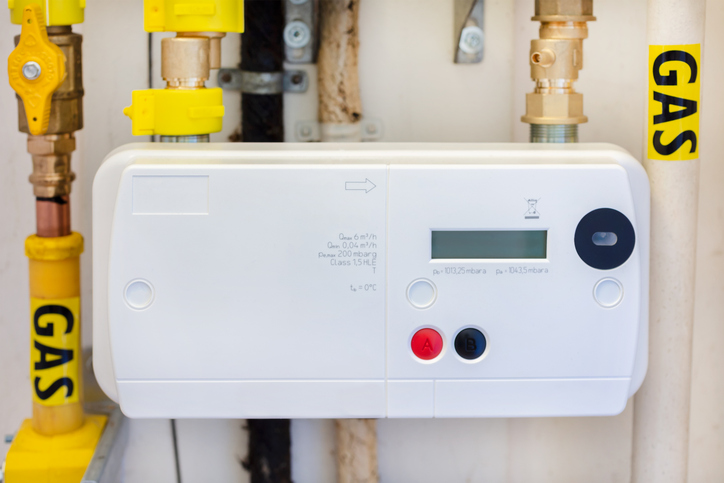- Home
- Braemac Blog
- Natural Gas Metering
Natural Gas Metering
Traditional vs Smart
About Jari Haiston

On a cold winter evening in a bustling city, families gather indoors with heaters humming and kitchens alive with warmth. Beneath this comfort, an aging gas meter ticks away in a forgotten basement. Unbeknownst to the cozy occupants upstairs, a small leak begins that goes undetected for weeks. The leak grows, unnoticed, until a spark from a boiler ignites it. The result is a fire that could have been prevented.
Tragically, this scenario isn’t rare. According to a 2018 NFPA report, natural gas is responsible for an average of 4,200 home fires each year. U.S. fire departments respond to approximately 125,000 residential gas or liquefied petroleum gas leaks annually.
Gas meters are essential—they measure the volume of gas used in homes and businesses. While we can’t eliminate them, we can make them more intelligent. Smart metering methods are transforming energy management through real-time data that enables early leak detection, remote shut offs, and optimized energy use. As homes, buildings, and cities become increasingly connected, smart meters are now a key component in the broader smart infrastructure. As global energy demands evolve, developers and utilities alike are embracing smart metering as a cornerstone of a safer, more efficient future.
Foundational Metering Technologies
The first practical gas metering was developed in 1815 by Samuel Clegg in England. Operating as a revolving drum water-sealed gas meter, it first measured gas plant send-outs with meter diameters up to 16 feet. Traditional metering has come a long way from Clegg’s initial meter development’s, and now there are different types of gas meters available – each with their own unique advantages and trade-offs. Common types include:
- Diaphragm meters: Most prevalent in residential areas.
- Rotary meters: Often used in larger commercial settings.
- Turbine meters: Suitable for high-flow applications.

Relying on manual readings, traditional metering time-consuming, prone to human error, and often infrequent—which means gas leaks or pressure anomalies can go undetected for extended periods. This delay increases the risk of explosions or fires, especially in densely populated areas.
What is a Smart Gas Meter?
Unlike their predecessors, smart meters offer a proactive approach to gas and energy measurement. Smart meters are connected pieces of broader intelligent ecosystems. Enabling real-time data insights on gas usage, smart gas meters are known for their enhanced functionality. Smart gas meter benefits include:
- Real-time usage data: Instant insights to manage consumption.
- Remote monitoring: Track usage from anywhere through apps.
- Data analytics: Usage patterns are analyzed to optimize energy efficiency and detect early signs of wear or misuse.

Moreover, smart gas meters contribute to greater sustainability initiatives. By providing precise data, they help in optimizing energy use. This contributes not only to cost savings but also supports environmental goals. Smart meter integration in smart grids also enhances energy management. Utilities can better handle peak demand with accurate data. This ensures reliability and efficiency across the network.
Developing the Next Generation of Smart Gas Metering
Precedence Research site that global smart meters market size is expected to reach around $79.97 billion by 2034, growing at a CAGR of 9.40% from 2025 to 2034. The rapid adoption rate of smart metering solutions presents significant opportunity for developers to drive further intelligent innovations across the utilities sector.
As utilities and OEMs race to modernize their infrastructure, the need for cutting-edge gas metering technologies is creating fertile ground for embedded engineers, IoT developers, and system integrators to enter the playing field. Modern smart meters rely on advanced electronic components that demand enhanced protection against electrical transients – more so that previous generations. In smart energy meters, electrostatic discharge (ESD) and power surges are transients that designers must account for. In intelligent gas meters, engineers must also consider the sensitivity of gas flow measurement. Braemac Americas | Symmetry Electronics has a curated portfolio of best-in-class solutions for developers looking to support innovations in smart metering designs.
Without a dependable, responsive sensor, even the most sophisticated smart meter is limited in function and reliability. Gas flow sensors serve as the core measurement engine behind smart gas meters, enabling:
- Instantaneous and accurate flow tracking
- Early-stage leak detection and system alerts
- Data integration for wireless transmission and cloud monitoring
- Detailed consumption profiles to support optimization and diagnostics
The SFM5500 Series from Sensirion is purpose-built to meet the demands of next-generation smart gas metering applications—where high accuracy, long-term reliability, and fast response times are critical.
- Excellent accuracy and repeatability, with ±0.8% accuracy and ±0.1% repeatability of setpoint
- Ultra-wide measurement range, from below 0.1% to 100% of full scale, making it ideal for both low and high flow conditions
- G ¼″ flange compatibility, supporting a wide variety of standard connectors like Swagelok, Legris, and Festo
- Pre-calibrated for multiple gases, including Air, N₂, O₂, H₂, He, CH₄, N₂O, Ar, and CO₂—perfect for multi-gas utility environments
- Digital output with built-in temperature compensation, ensuring stable performance in changing environmental conditions
- Lightning-fast response time for real-time flow feedback and rapid leak detection
- Pressure resistance up to 10 bar, suitable for high-demand infrastructure applications
- Extraordinary reliability, with a Mean Time Between Failures (MTBF) of 169 years
- No drift over time and no re-calibration required—ideal for remote and long-life installations
- NIST-traceable factory calibration for confidence in every measurement


.png)
.png)
